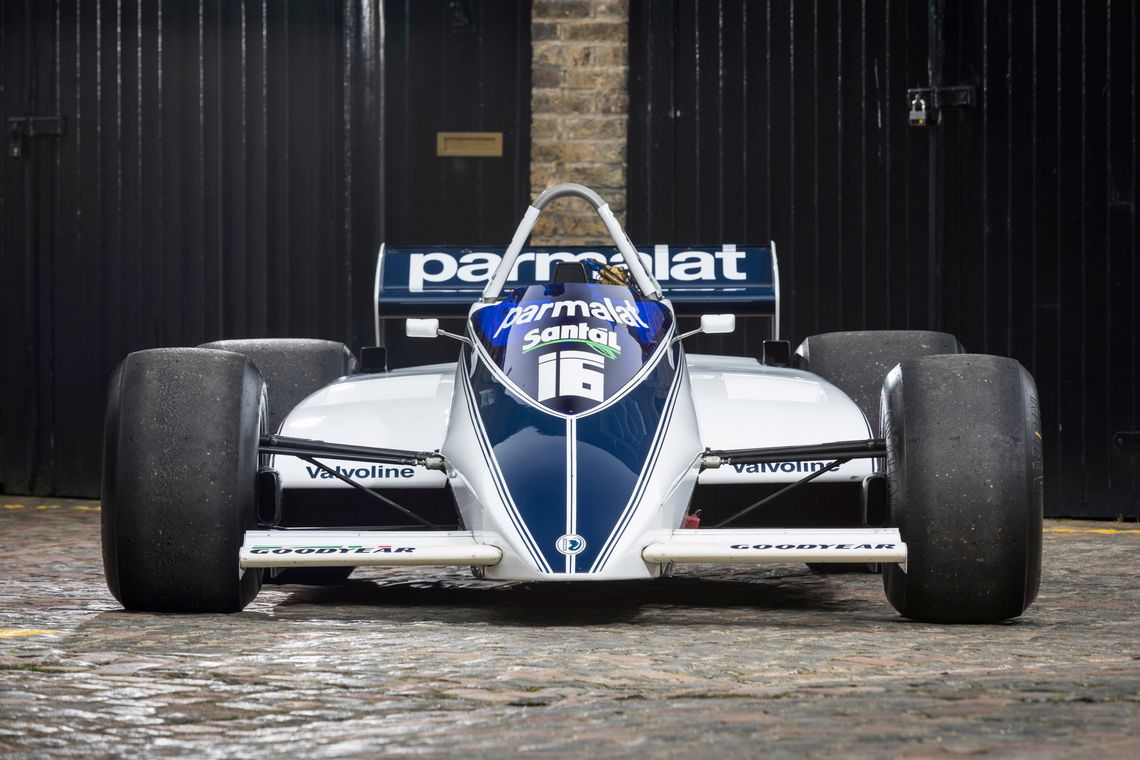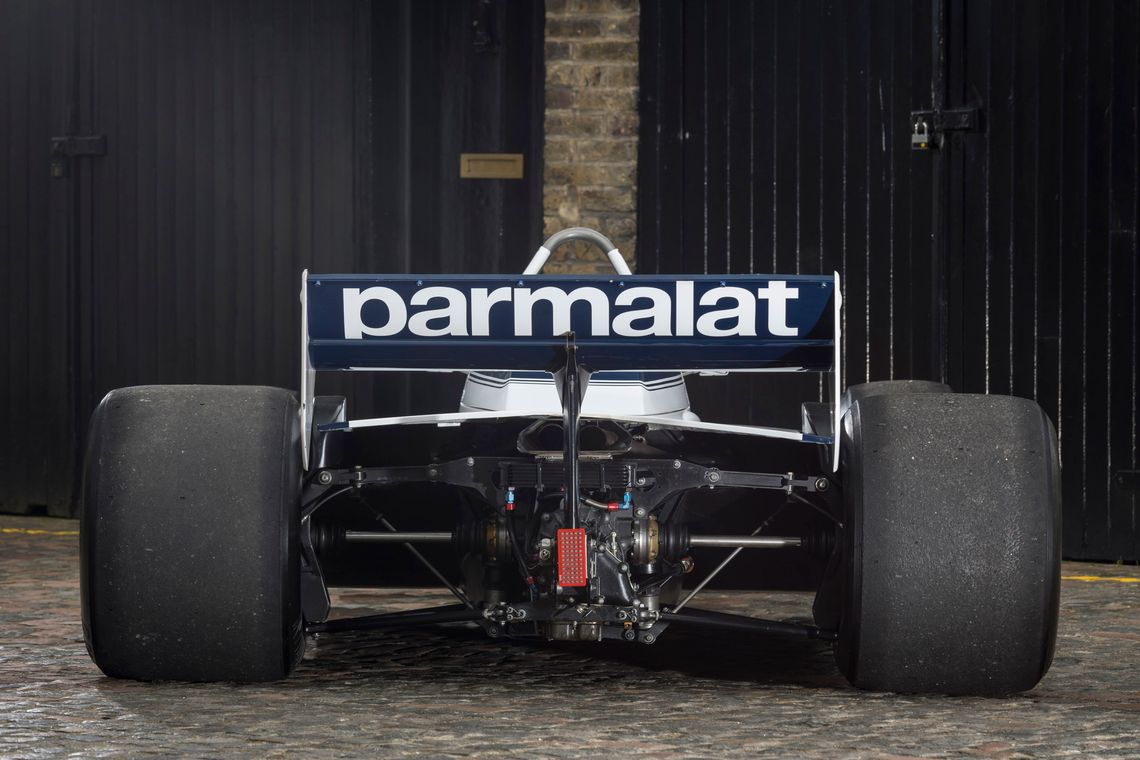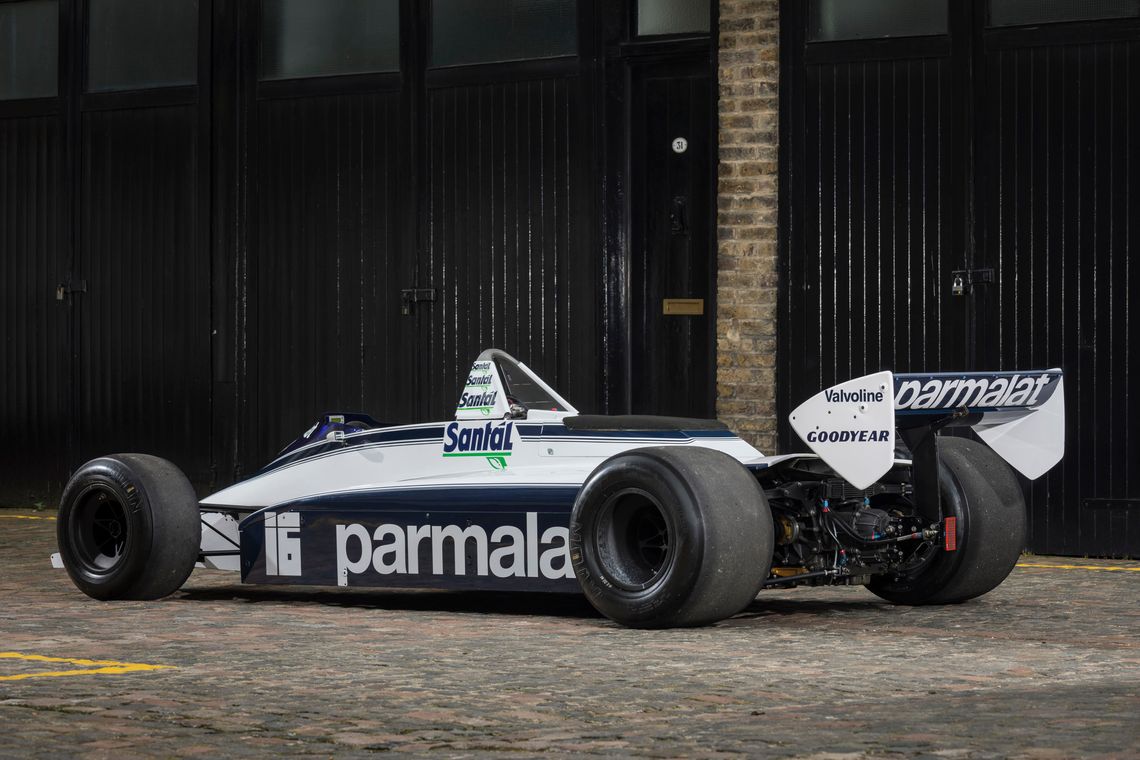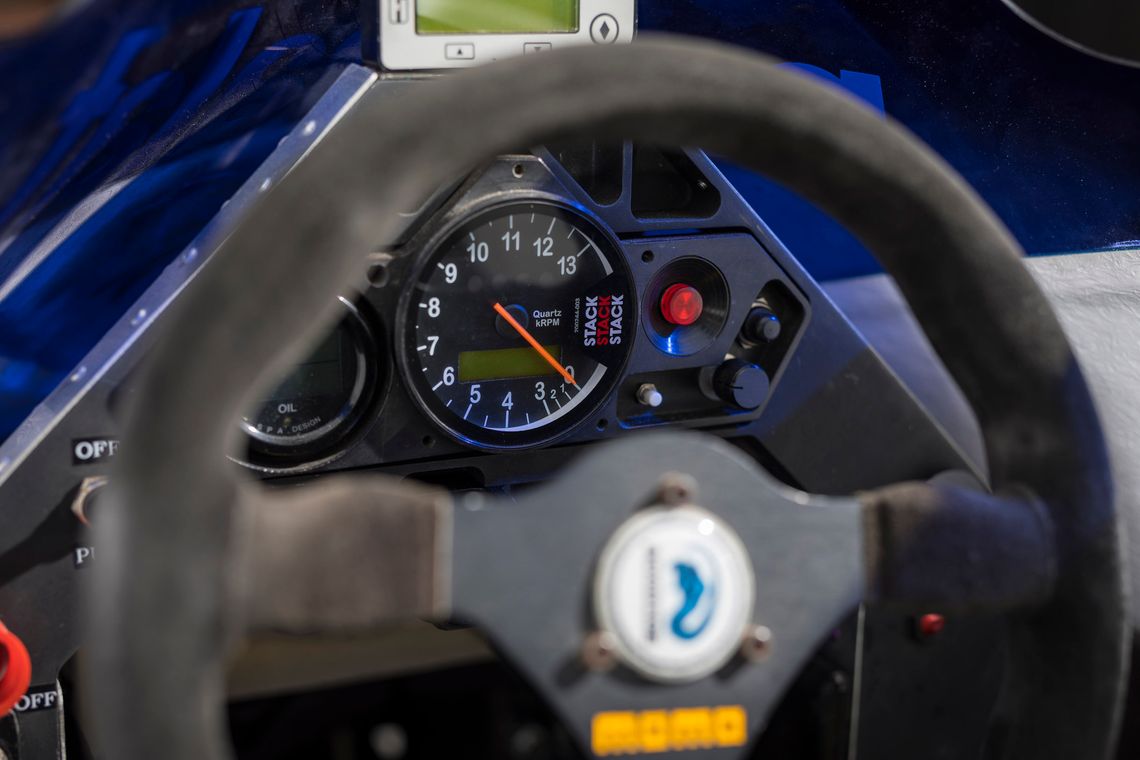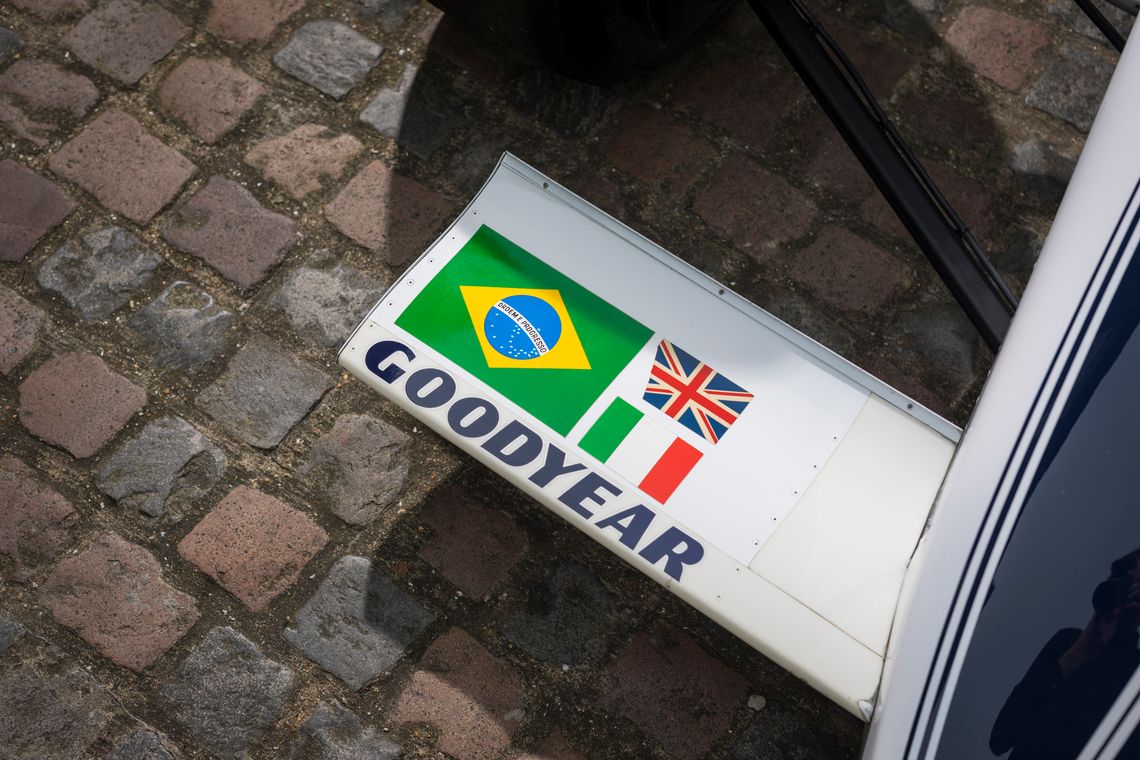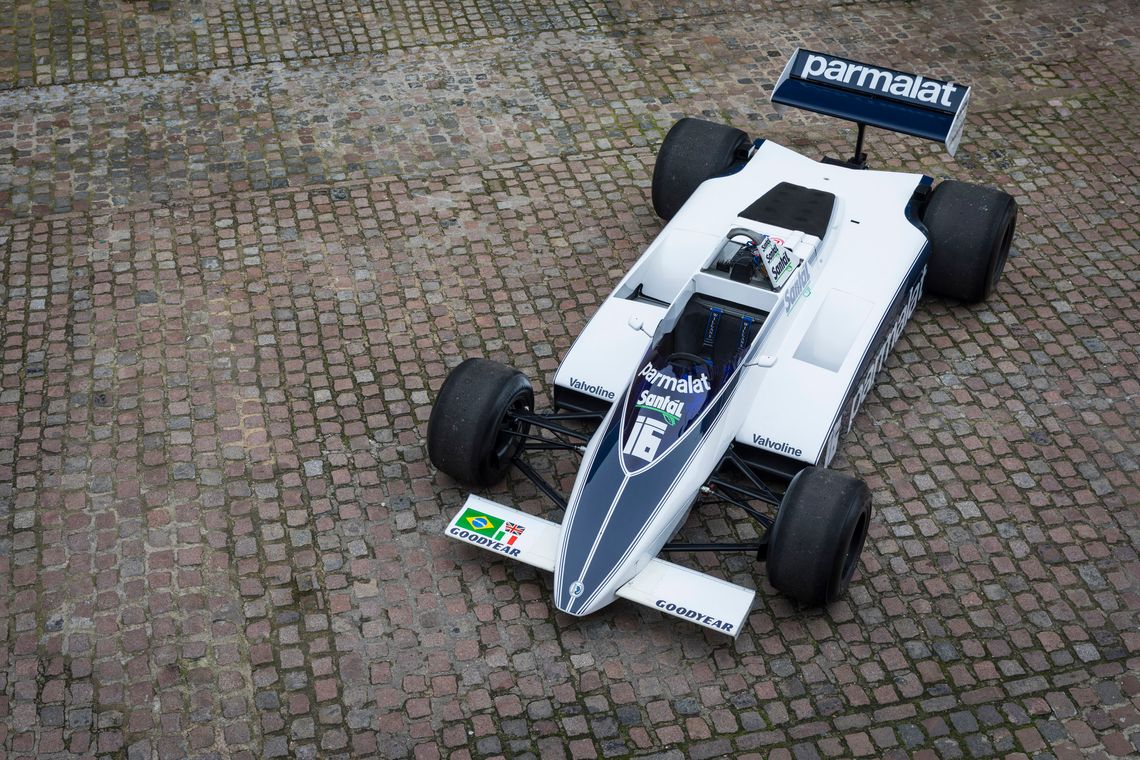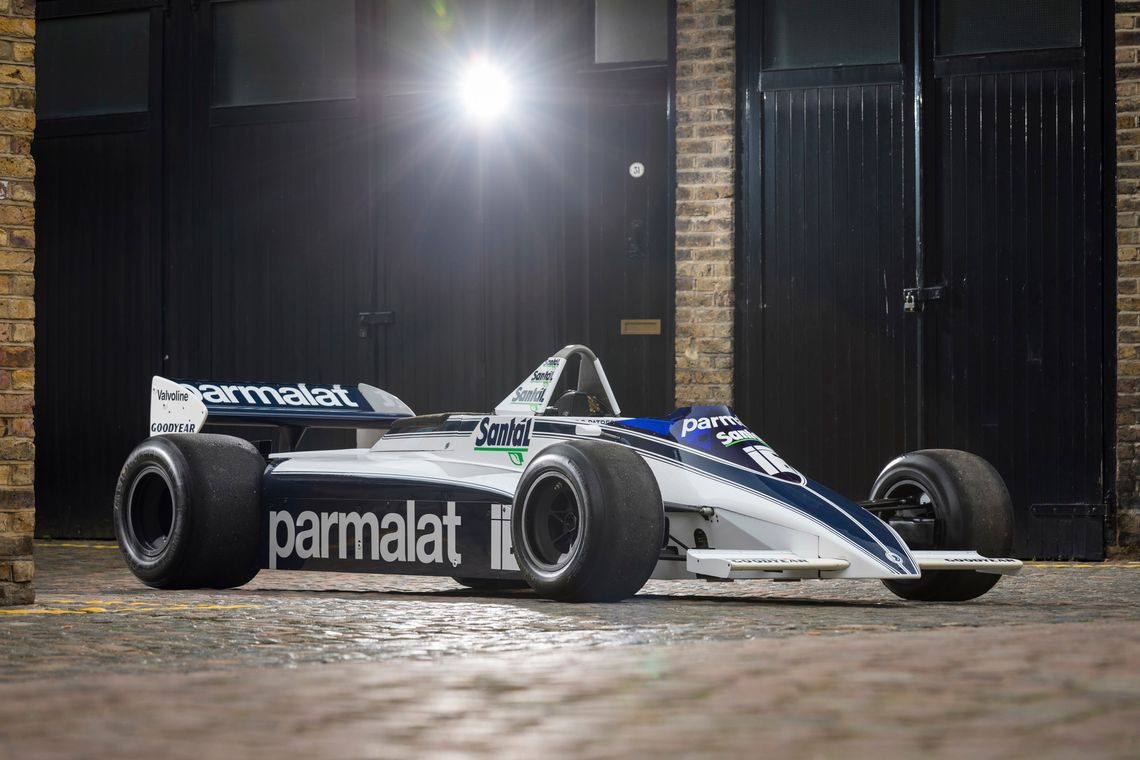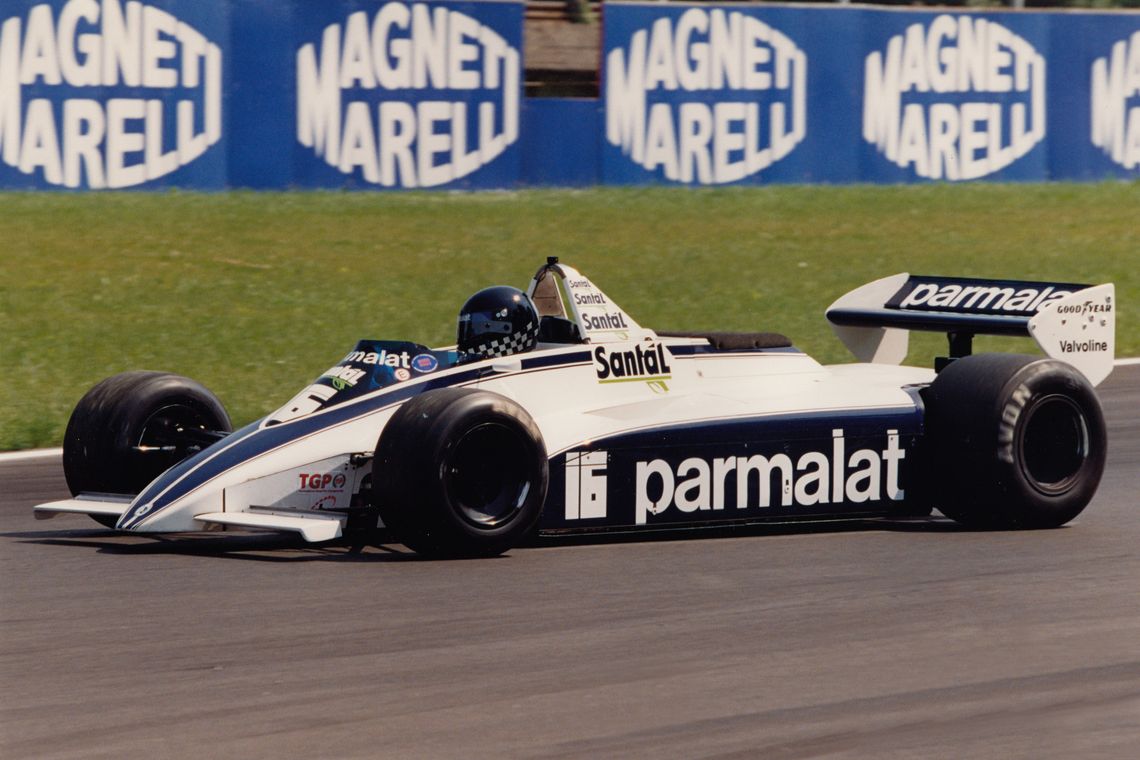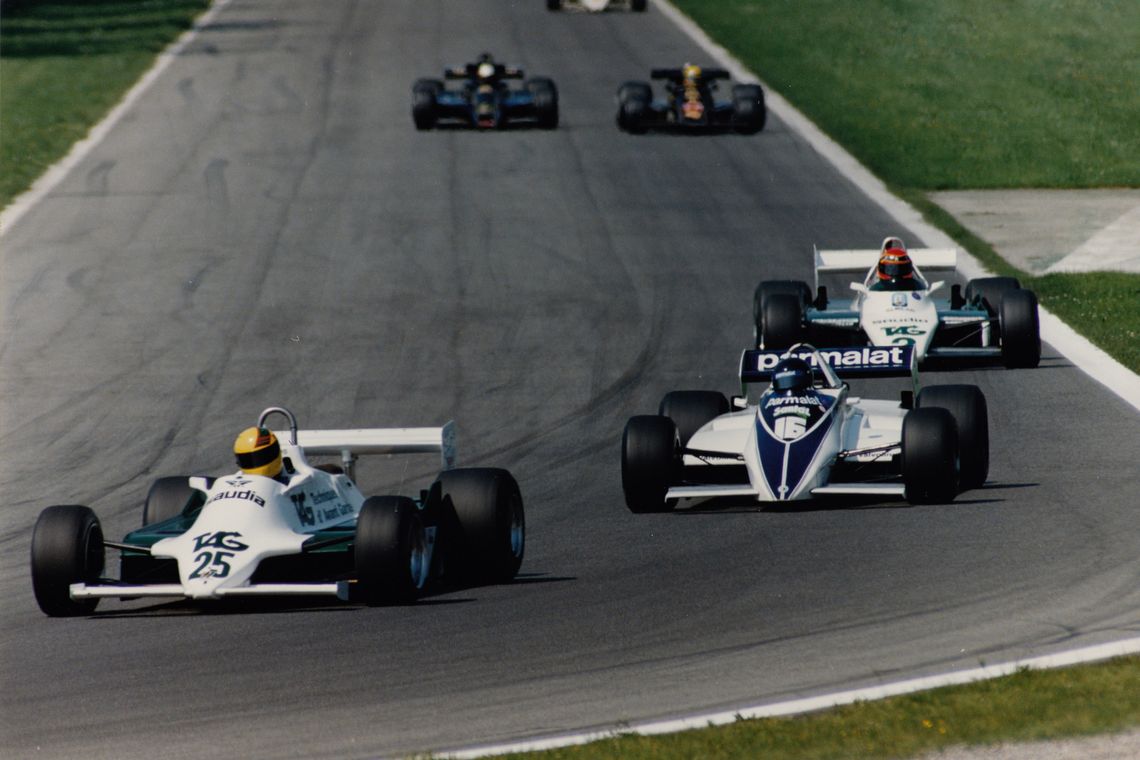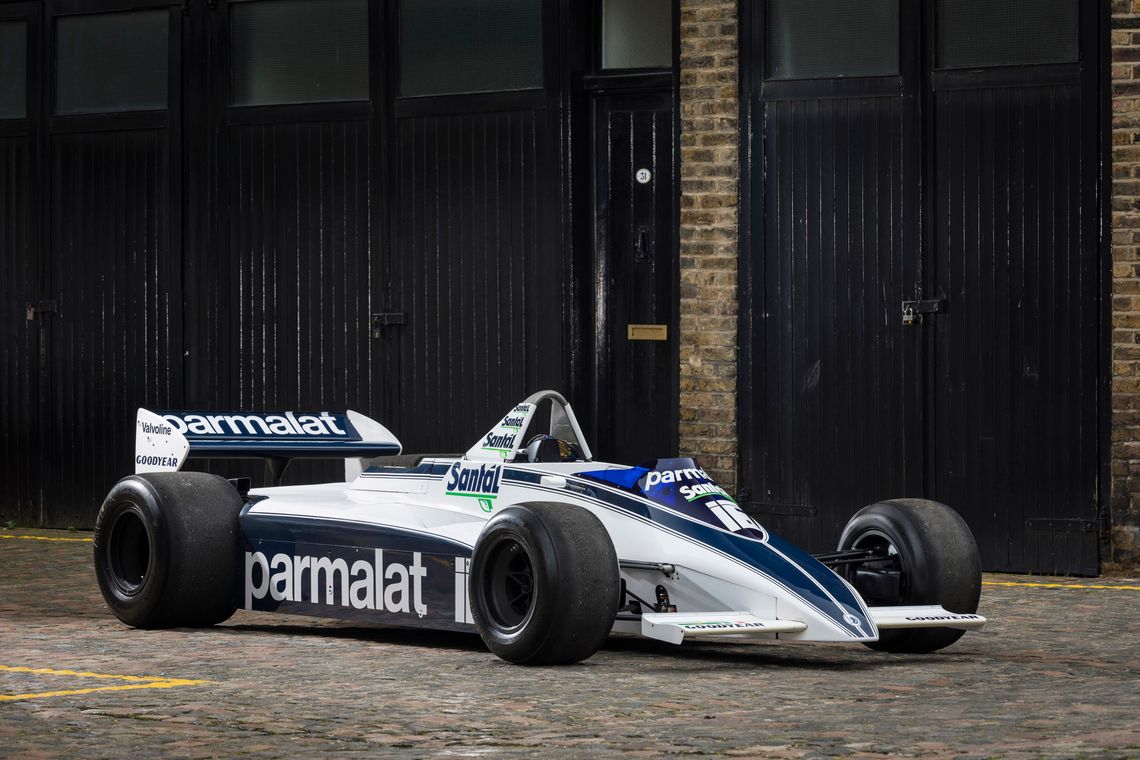
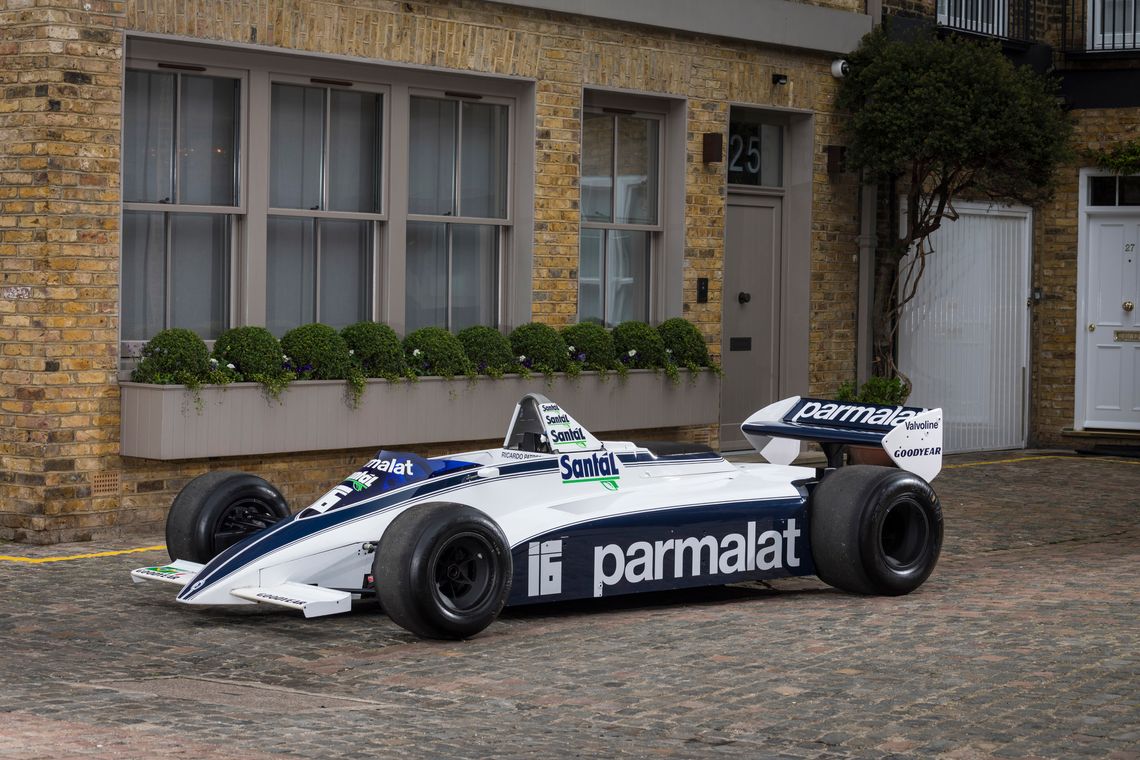





Chassis Number: BT49D-18
Every epoch of Grand Prix racing has been graced by magnificent cars which transcended the normal creations of genius and which pushed the boundaries of performance beyond the reach of even their most stellar rivals. Debuted in the autumn of 1979, Gordon Murray’s Brabham BT49 design is regarded by the South African’s peers as the ultimate Cosworth DFV-powered chassis in an extraordinarily competitive era which saw the Ford-badged three-litre V8 engine win 155 Formula 1 World Championship races over an incredible 17 years.
Evolved over four seasons by F1 ringmaster Bernie Ecclestone’s Brabham team, in three distinct specifications, Murray’s family of BT49s were very special in almost every respect. Freed at last from the compromises previously imposed by cumbersome and thirsty 12-cylinder Alfa Romeo engines, in both flat and vee formats, Murray delighted in shrink-wrapping the compact DFV in the neatest, sleekest package. Supremely elegant and stunningly detailed the BT49’s monocoque was beautifully crafted in aluminium with carbonfibre stiffening panels. Setting new standards aerodynamically his masterpieces were quick out of the box and netted six pole positions.
With promising tools at their disposal at last, although the mercurial turbocars won the arms race in terms of power, Murray and his lieutenants worked tirelessly to maximise the inherent advantages they had. The team proved most adept at mastering the complex sliding skirt ‘wing car’ concept which unlocked extraordinary new parameters of cornering speed without, on the Brabham at least, sacrificing basic straight line speed. By the end of 1980s the C-spec BT49s were the quickest Cosworth cars, but Piquet’s retirements from the last two rounds – both won by rival Alan Jones in his Williams FW07B – saw the gritty Australian pip him to the championship.
Seventeen examples, nine BT49s, five BT49Cs and three BT49Ds (number 13 was not allocated) were built at Chessington, south-west of London. Brazilian Nelson Piquet – who had made his F1 debut in a low-rent Ensign in 1978, the year he won the British F3 championship in a Ralt RT1 (penned by the brilliant Ron Tauranac, co-founder in 1961 of the Brabham marque with then double F1 world champion Jack Brabham) – scored all but one of the BT49s’ seven Grand Prix victories, landing the first of his three World Drivers’ Championships in them in 1981.
In an incredibly tight season set against a backdrop of bitter controversy as sliding skirts had been banned – spawning active hydraulic ride-height optimising set-ups demanding minimal suspension travel which placed massive physical stresses on both chassis and drivers – the top seven all won races as sizzling 1500cc turbocars really began to show their teeth. Working with a bizarre scoring system, Piquet pipped Williams’ Carlos Reutemann by a point, with defending champion Jones (Williams), Jacques Laffite (Ligier) and Alan Prost (Renault turbo) also within one maximum score of the crown!
Brabham joined the forced-induction set in 1982, entering a partnership with BMW to run its ferocious but initially fragile four-cylinder engines in BT50s, but it is a mark of the ever-competitive team boss Ecclestone that he sanctioned production of three new Cosworth-powered BT49Ds, with pared-down tubs permitting lower-line bodywork, as stopgaps for Piquet and Riccardo Patrese to race while the prodigious German horsepower was tamed and made reliable by engineers in Munich. Indeed, torque trumped turbos on the streets of Monaco where the Italian won in chassis 17.
The team’s BMW teething problems continued next time out at Detroit, where Piquet failed to qualify, and Patrese crashed out of the tragic race in which Ricardo Paletti lost his life. Undeterred, the Brabham team regrouped for the Canadian GP at Montreal, building up a brand new BT49D – chassis 18, the last of the noble line – for Riccardo. A week after the abject despair of ‘Motown’ Nelson and Riccardo scored a resounding 1-2 finish, Piquet’s the first for BMW in F1. It was all turbo thereafter and the surviving BT49s were mothballed.
Team boss Ecclestone subsequently gifted BT49D-18 to its brilliant designer Gordon Murray who of course went on to pen the BMW V12-engined McLaren F1 GTR road-going supercar which, at its first attempt in 1995, defeated bespoke sports racers to win the Le Mans 24 Hours. Sister cars finished third, fourth and fifth!
With Murray’s fertile mind engaged on new projects he eventually sold BT49D-18 to Briton Ian Giles, a film industry professional and enthusiastic amateur racer who had previously campaigned a Tyrrell 012 in the FIA Thoroughbred Grand Prix Championship. Giles immediately became a frontrunner in the charismatic competition for 3-litre F1 cars from 1966-1985. Raising his game in the beautifully set-up Brabham, he won the first two rounds in 1997 on the ultra-fast Silverstone and Monza tracks where his lithe steed was in its element.
German GT racer Christian Gläsel acquired BT49D-18 from Giles and henceforth intensified his historic racing activities, campaigning a collection of cars spanning only the very finest machinery, from Alfa Romeo P3 and Jaguar D-type to Ford GT40 and Ferrari 312PB. Having tasted much success in individual races – winning at Donington in 2000 and Most in the Czech Republic in 2001 – Gläsel dominated the 2005 season, winning seven of the eight rounds and the FIA TGP title (Spaniard Joaquin Folch won the other in BT49-10). Both Brabhams were prepared and run from Switzerland by champion historic racer Fredy Kumschick’s team.
Chassis 18 is one of three Brabham BT49s to have competed in the prestigious series, sanctioned by motor sport’s world governing body and now run as the FIA Masters Historic F1 Championship. In 2012 the title was won by Folch-Rusinol who tops the race winners table with 28, 22 in his Brabham, run by several teams.
Back in 1996, preparer and ex-F1 mechanic Simon Hadfield won Most’s finale as a late substitute for Ermanno Ronchi, the Italian to whom Bernie Ecclestone had loaned BT49-9. In 1998, Ronchi triumphed in it on home soil at the Autodromo Nazionale di Monza. Every competitor who has raced a BT49 in the series has thus taken the chequered flag. All laud the cars for their stunning straight-line speed, awesome driveability and confidence-inspiring build quality.
Widely regarded as the most beautiful cars of Formula 1’s charismatic, colourful and ultra-competitive late ‘Cosworth’ era, Brabham’s glorious BT49s are deservedly icons of the sport, and will therefore always be aspirational. The rarest D-spec evolutions are the ultimate expressions of design legend Gordon Murray’s winning theme.
With Bernie Ecclestone retaining his four surviving BT49s and with one other in private ownership, no BT49 has ever changed hands on the open market. Fiskens are honoured to offer for sale chassis BT49D-18, in which Riccardo Patrese raced to second place in the 1982 Canadian GP behind team leader and defending World Champion Nelson Piquet’s BMW turbo powered BT50. A unique opportunity to own and race the last in a sensational line of DFV-powered Brabhams and the masterpiece of one of the world’s greatest designers.
